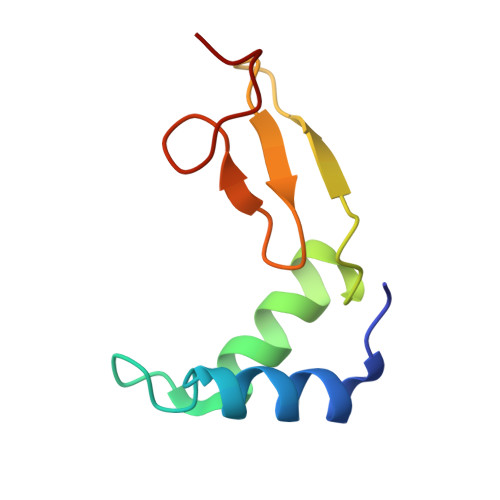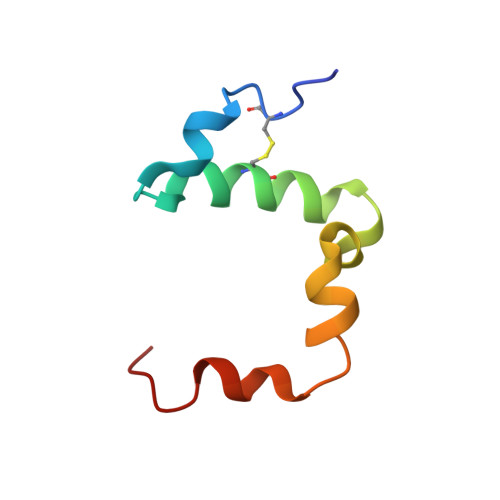Salt-assisted religation of proteolyzed Glutathione-S-transferase follows Hofmeister series.
Kishan, K.V., Sharma, A.(2010) Protein Pept Lett 17: 54-63
- PubMed: 19508200
- DOI: https://doi.org/10.2174/092986610789909395
- Primary Citation of Related Structures:
3ZVQ - PubMed Abstract:
Proteases have been used not only for proteolysis but also in organic solvent-assisted religation processes. Here, we demonstrated the effect of salts on peptide bond resynthesis in Glutathione-S-transferase (GST) and have found it to be in the purview of the Hofmeister phenomena. Our results show that the efficiency and ease of religation increases with an increase in the surface charge densities of the cations used in the study. Thus, the yield of religated GST follows the order: Mg2(+)>Li(+)>Na(+)>K(+). Characteristics of the salt-religated GST were studied using size exclusion chromatography, CD spectroscopy, mass spectrometry and CDNB activity assay. Results show that the properties of salt-religated GST are in close agreement with those of the native GST. Additionally, we also assessed the specific activity of the protease, Subtilisin Carlsberg, used in this study. Contrary, to aqueous-organic systems, wherein there is a remarkable decrease in the proteolytic activity, the activity in the presence of salts is only minimally changed. Our studies suggest that salt-assisted peptide bond formation is favoured primarily due to changes in the ionic environment of the nicked termini of GST, and that there is no role played by the protease.
- Institute of Microbial Technology, Sector 39-A, Chandigarh 160 036 India. radhakishan@gvkbio.com
Organizational Affiliation:

















